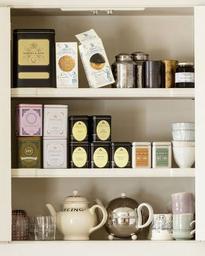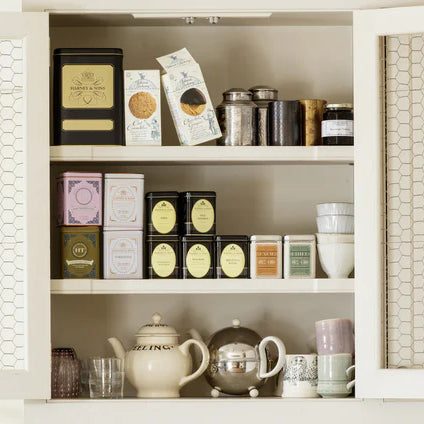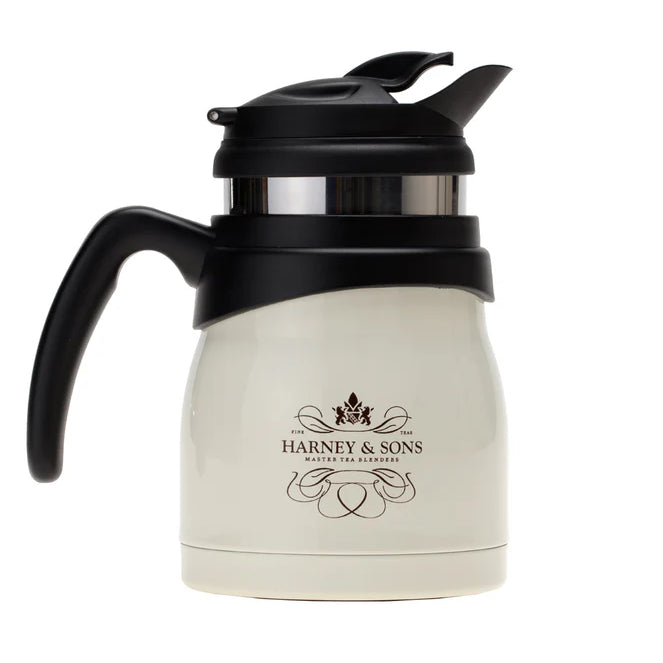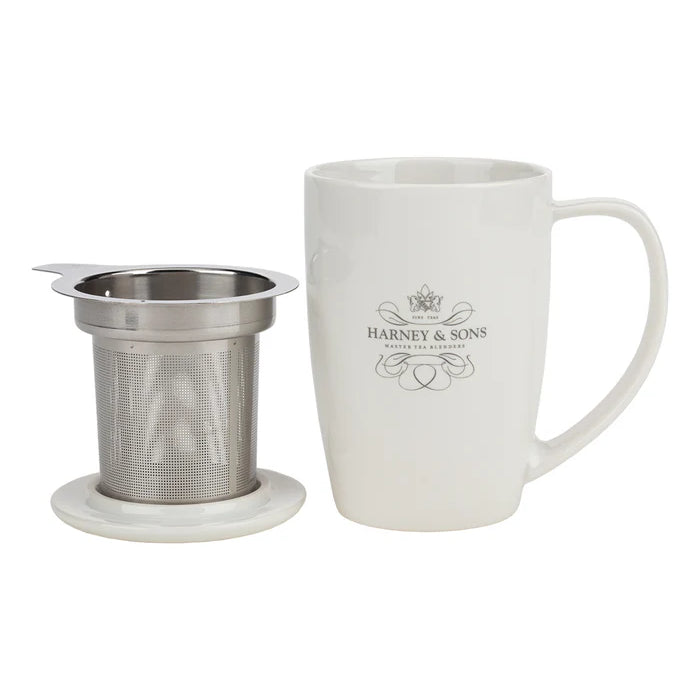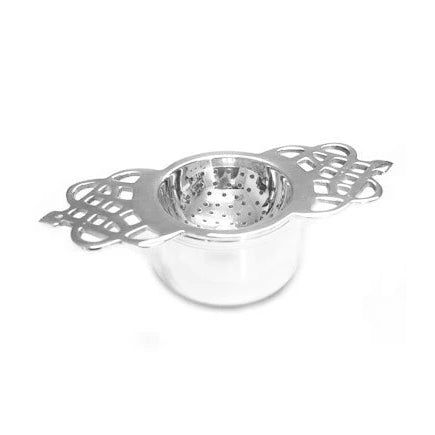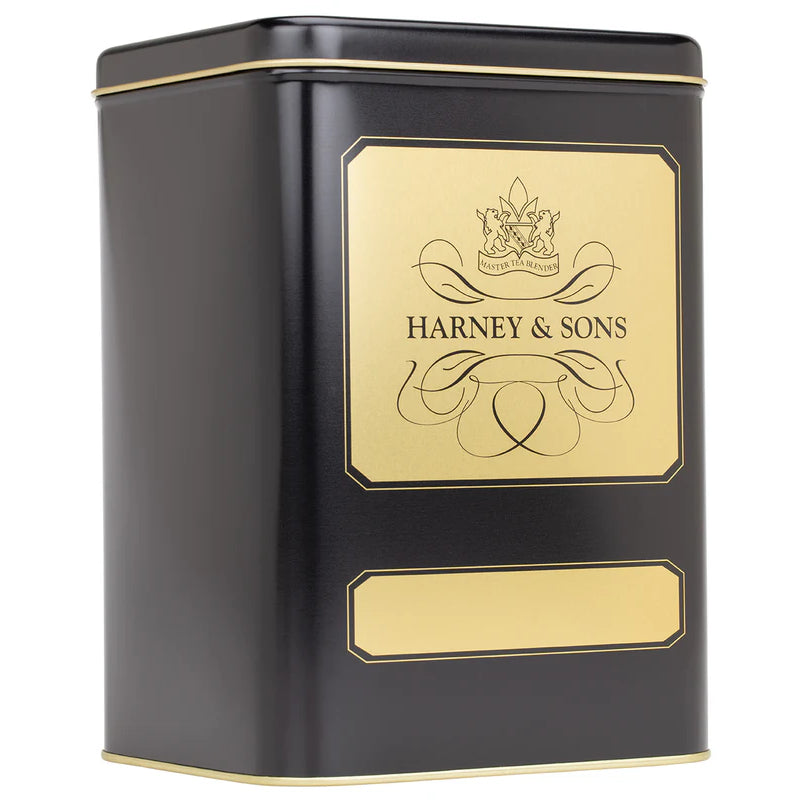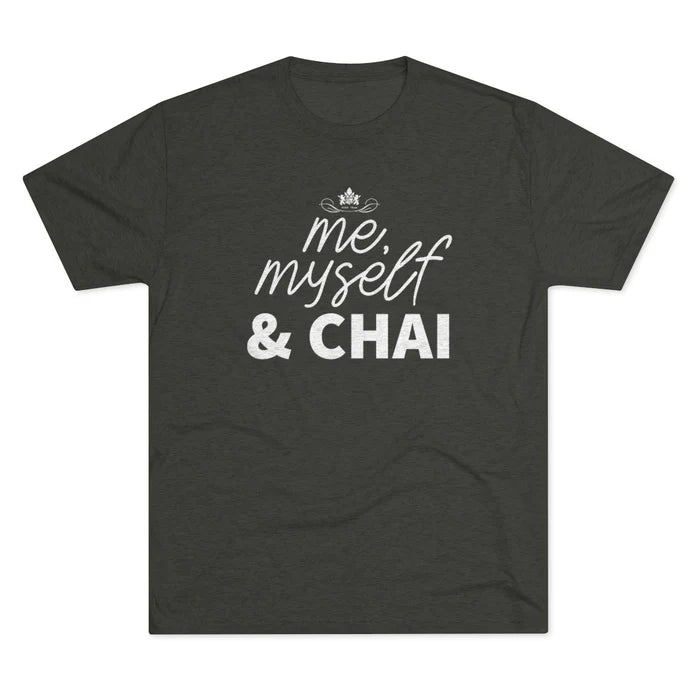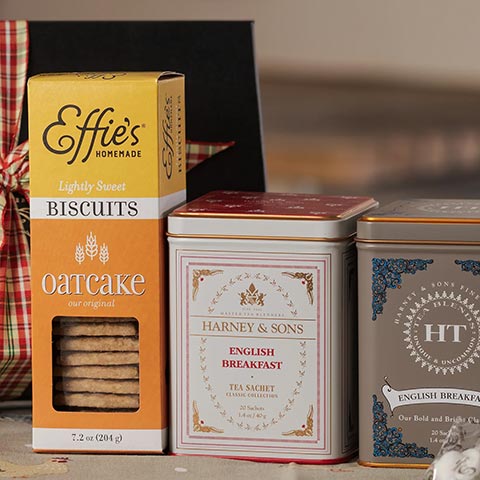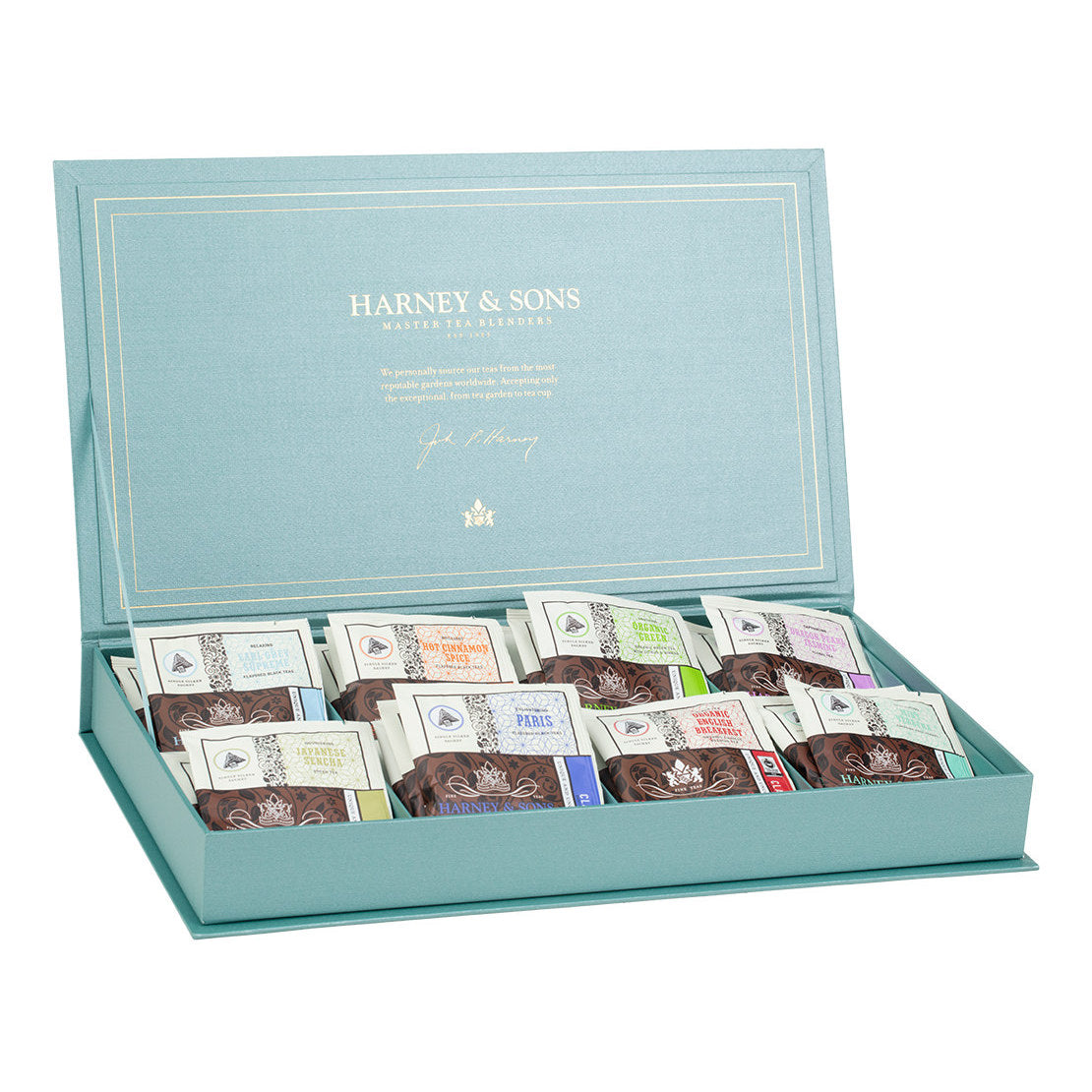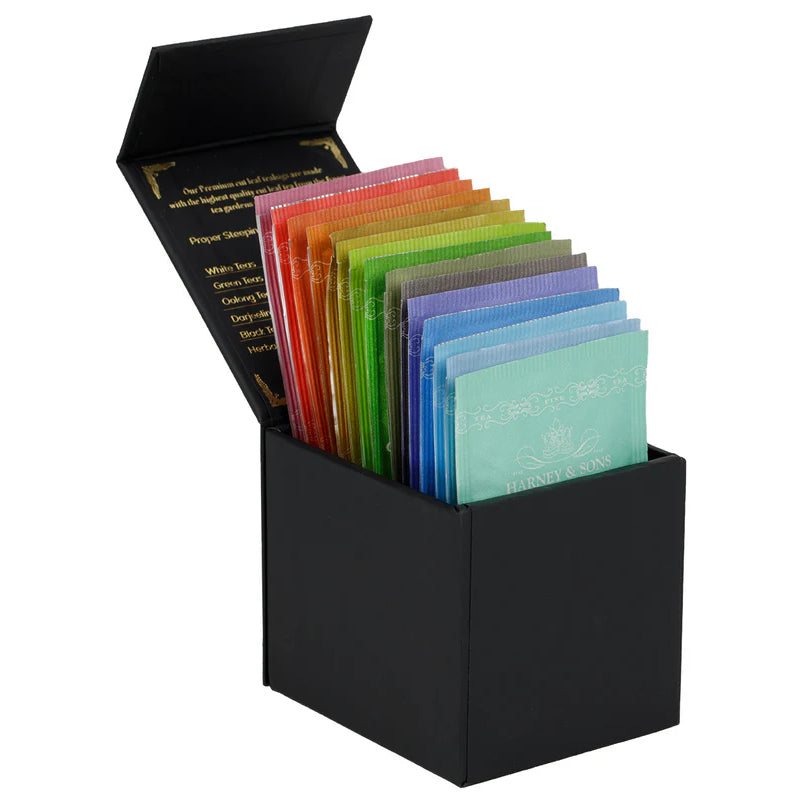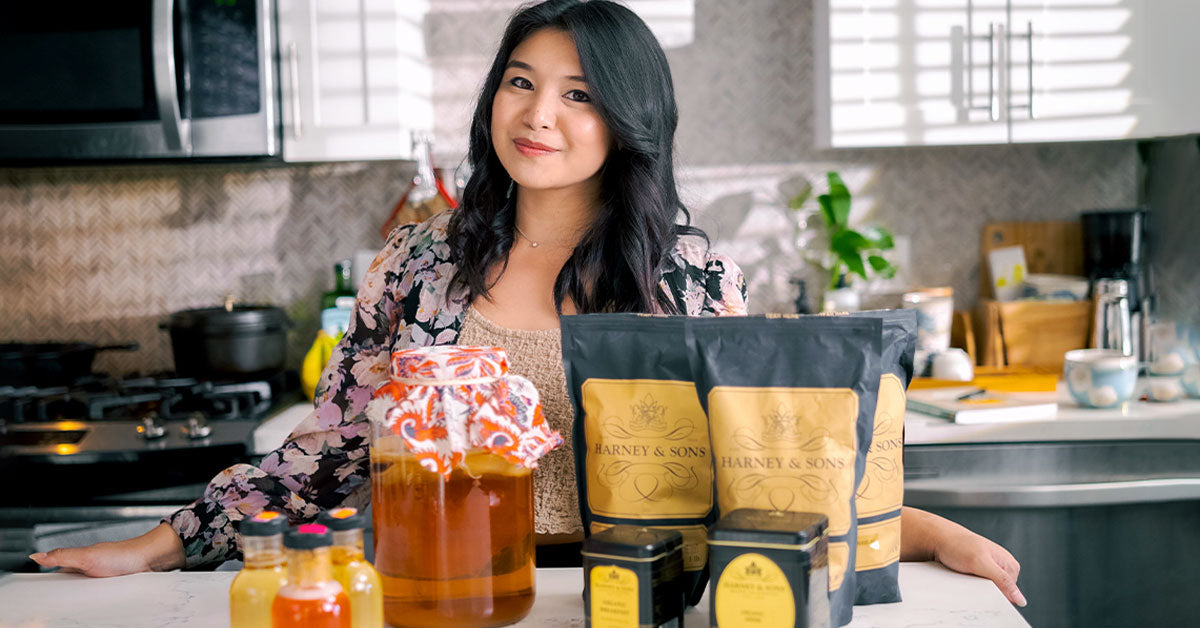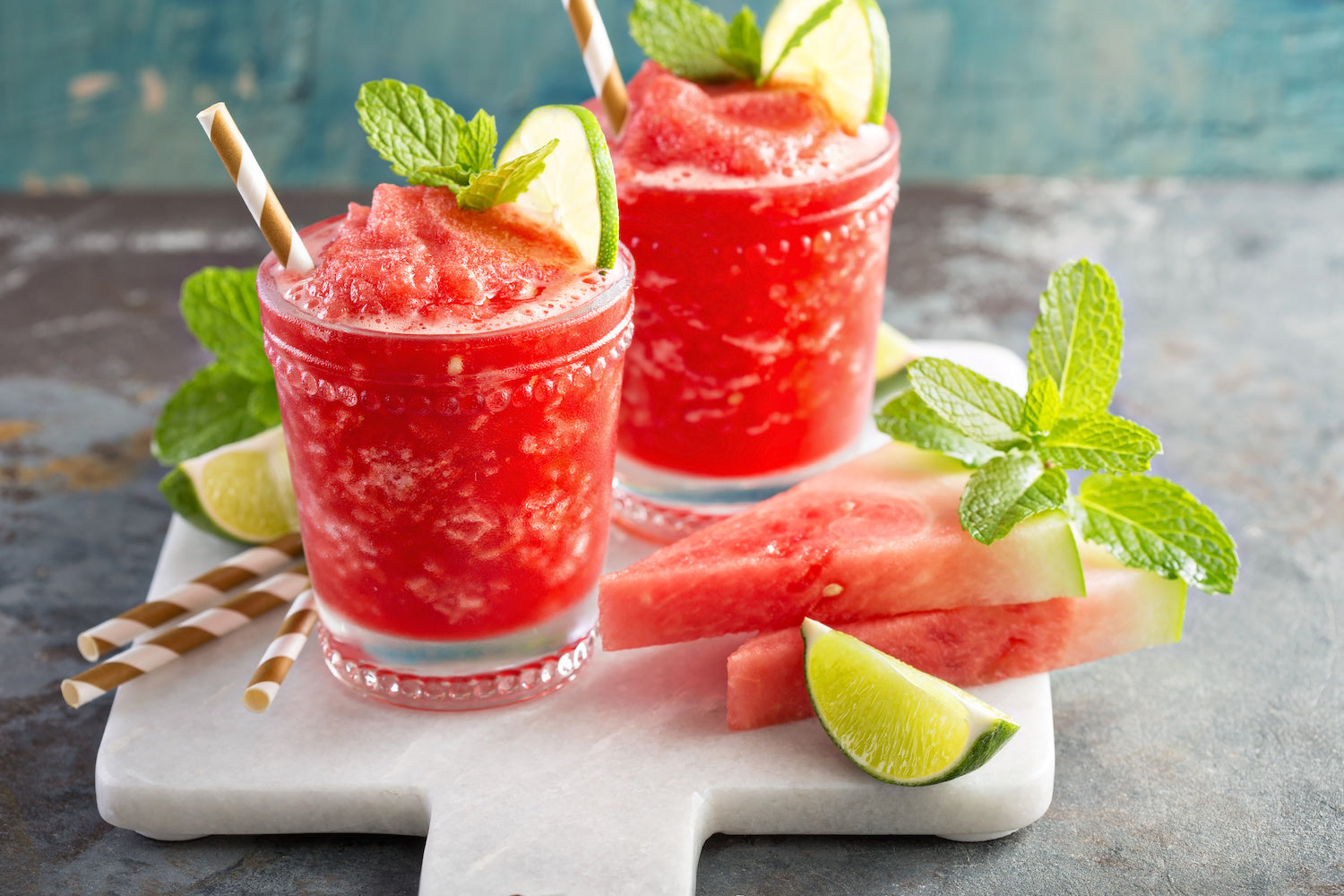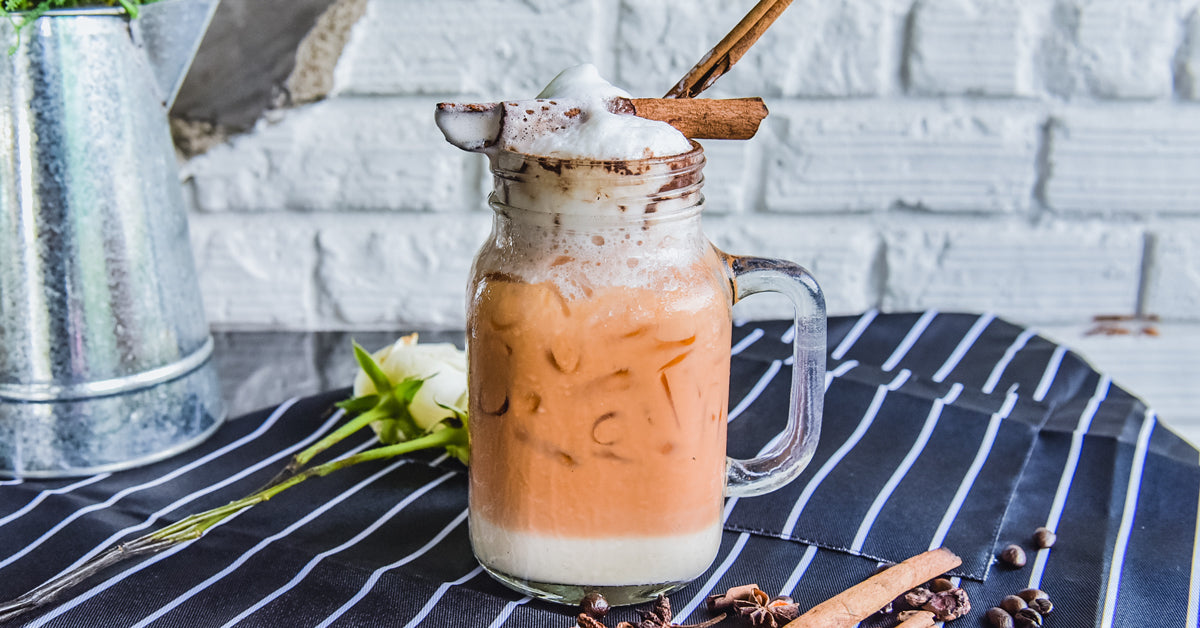Angelica Kelly
Author and Creator of You Brew Kombucha
If you’re a kombucha fan, get ready for a real treat! Our July teafluencer, Angelica Kelly, is a kombucha guru and completely passionate about tea (check out her tattoo!). We love her spirit, enthusiasm, philosophies and insights along with her impressive tea and brewing knowledge. Whether you’re firmly in the kombucha camp, on the fence or just intrigued by this popular beverage, we think you’ll enjoy what Angelica has to say about fermented tea… at yeast we hope so!

Harney: Tell us a little about you. Where are you from, educational background, where you live, family, etc.
Angelica: I’m a Los Angeles native, and I love my hometown. I went to business school at Loyola Marymount University (LMU), and I’ve made my career working in communications and PR at Fortune 100 companies and high-growth startups. But beyond my day job, I like to think of myself as a bit of a “jack-of-many-trades.” I’m always juggling a few passion projects. I make homemade candles and recently taught myself how to make hand-painted chocolate bonbons. You’ll usually find me cooking or fermenting things -- I brew beer, bake bread, make cheese and yogurt, pickles and kimchi. And I brew kombucha.
Kombucha brewing is the hobby that’s taken on a life of its own. When I was first learning, I scoured books, sites and videos, and I talked to homebrewers and commercial brewers. But I couldn’t find a single source that gave me the level of detail I was looking for and made the process easy to understand. So I partnered up with my husband (who’s a commercial director) to film about 30 tutorials. The You Brew Kombucha YouTube channel ended up growing quite a following over the next couple years. Now, we’ve got about 70 tutorials on the channel and we’ve got about 30 more that we’re releasing over the next few months. You Brew Kombucha is the resource I wish existed for me when I was first learning.
Harney: So, for those folks who aren’t familiar with kombucha, can you explain what it is?
Angelica: At its simplest, kombucha is just fermented sweet tea. It’s essentially a type of vinegar ferment that uses good bacteria and yeast cultures to naturally turn sweet tea into a fizzy, slightly acidic drink. You’ll usually find it flavored with fruit.
Harney: When did you become a kombucha fan? And how did you get into making it yourself?
Angelica: When I was a kid, my mother used to buy fermented tea from the Asian market and have me drink it in small amounts like a tonic to help with my digestion. It wasn’t labeled “kombucha” and it wasn’t flavored and fizzy. I actually remember not liking it at all because it was really tart! But I have a strong suspicion this fermented tea was just kombucha by another name. I didn’t really start liking kombucha until I was in college. I’d buy bottles of store-bought kombucha and I loved the way it tasted, but I was on a tight budget and didn’t want to pay $8+ a bottle. Luckily today, with more commercial kombucha brewers in the market, it’s more affordable than ever. But I mainly wanted to brew it myself because of the cost savings, and because I really wanted to customize the fruit flavors, acidity level and carbonation level in a way that you just can’t do with the store-bought stuff.

Harney: What are the benefits of drinking kombucha? What do you like about it most? How would you describe its flavor?
Angelica: There are a lot of zealots out there who talk about how it’s loaded with probiotics and contributes to a whole host of health benefits. There are also a lot of naysayers who say that it’s all nonsense. I think (as with most things) the truth is a little more nuanced and between the two extremes. Kombucha is just fermented tea. I don’t believe that it’s guaranteed to help any ailments. But I do believe that like any food we consume, it affects each of our bodies in a unique and individual way.
Personally, I love that when I drink my home brews, my gut feels healthier -- it helps when I feel bloated or have indigestion. I feel a focused sense of energy without a caffeine crash. But all that aside, I just like the way it tastes. It’s a subtly sweet, slightly acidic, bubbly refreshing beverage that I enjoy drinking. I love flavoring it with different fresh fruit and herbs. It’s a great substitute for sugary sodas, and helps curb cravings for alcohol when I feel like reaching for a treat but don’t want the buzz or the after-effects of alcohol.
I think it’s interesting that people often ask about the health benefits of kombucha when we don’t necessarily apply the same level of scrutiny to other fermented foods like chocolate, beer, sauerkraut or fermented pickles. I think there’s just a lot of misinformation and a gap in general knowledge about fermentation (not to mention kombucha companies over-hyping the supposed health benefits). And kombucha is relatively new to the US, so there’s an interesting extra layer of expectations and scrutiny that people apply to it when the reality is that it’s just one of many fermented foods we can consume.
Harney: There are a lot of steps that go into making homemade kombucha. What would you say to people who are intimidated by the process?
Angelica: If you can make sweet tea and lemonade, you’re not that far off from making kombucha. There are a few basic principles you’ll need to get the hang of, but once you get into the swing of things, it can be really rewarding. And the beauty of it is that it’s pretty forgiving and you can adjust so many variables to make a drink that’s uniquely delicious to you.
Harney: What are the benefits of making your own kombucha rather than just buying it in the store? Seems a lot easier to just grab a few bottles at the store, doesn’t it?
Angelica: I love that I can control exactly what ingredients go into it. I can control the sweetness level, the quality of the tea, the fruit flavors, the level of carbonation and so much more. I can get creative with fruit flavor combos that I never see at the store. And it’s really satisfying to make something from scratch and enjoy the process and the outcome.
There are also some scientific studies (like this one) that suggest that the probiotics and the bacterial cultures in home-brewed kombucha are more varied and diverse (and consequently possibly more beneficial) than the cultures and probiotic strains added to many commercial, store-bought brews.
It’s sort of like the difference between making a homemade meal and picking something up at the store or a restaurant. I happen to like cooking and making things, but the reality is that not everyone falls in that camp, and sometimes I don’t have the time or interest to make a totally homemade meal. So in those instances or for people who don’t find it worth the effort to make homemade kombucha, then grabbing a few bottles at the store is certainly a lot more convenient, so there’s nothing wrong with that!
I’m not interested in convincing everyone to make homemade kombucha, I’m really all about equipping people with knowledge and empowering people to make the right choice for them, depending on what they want at the moment. When I’m traveling and don’t have access to my home brews, I’ve certainly purchased store-bought kombucha! Learning how to make it myself has just made me a bit more informed and scrutinous about store brands, their ingredients and their brewing methods.

Harney: The thing that makes kombucha really unique is the SCOBY. Please tell our readers what SCOBY is, what it stands for, why it’s a key part of kombucha and why you shouldn’t get totally grossed out by it!
Angelica: I am totally fascinated by the science behind the kombucha SCOBY! It’s an acronym that stands for symbiotic culture of bacteria and yeast. It’s essentially the culture that catalyzes fermentation and turns basic sweet tea into kombucha. It goes by a lot of names -- some call it the “mother” or the “pellicle.” It’s a cellulose mat that’s a byproduct of fermentation and houses some of the bacteria and yeast cultures that turn sweet tea into kombucha. A new or “baby” SCOBY is produced with most new batches of kombucha, and the SCOBY also helps turn sweet tea into more kombucha. It’s basically the means through which kombucha replicates itself. Most brewers like to focus on the pancake-like pellicle because it’s the most visible indicator of fermentation, but the reality is that good bacteria and yeast live in the liquid itself. So the symbiotic culture actually lives throughout the brew.
It can look a little gnarly, but I really hope people aren’t grossed out by it just because it’s unfamiliar or because bacteria and yeast are involved! So many of the foods we know and love are created through fermentation -- chocolate, coffee, bread, cheese, beer, wine, vinegar, soy sauce, miso and so much more. Most vinegars also produce SCOBYs as byproducts of fermentation. I think many people have become so removed from the fascinating and wonderful processes that create delicious food. But I hope that people can be more open-minded as we gain more knowledge and awareness about the processes that bring ingredients and food to our plates.
This isn’t a perfect analogy, but the SCOBY is similar to sourdough levain. Sourdough bread bakers have a mother dough or sourdough starter, which is a unique collection of yeasts that need to be “fed” with flour + water and is used to make more loaves of sourdough. With kombucha, it’s similar -- except instead of flour and water, SCOBYs need to be fed with tea and sugar. And instead of producing sourdough, SCOBYs produce kombucha.
Harney: You talk about how no two batches of kombucha are exactly alike. What have you learned from your trial and errors about how to always make a great batch of ‘bucha?
Angelica: I’ve learned that I have the most fun with the process when I play around with different variables and treat it like a science experiment. There should definitely be room for experimentation and thinking outside the box. In my book, my website and my YouTube channel, I share a framework to understand the basic kombucha “rules.” But I love this quote from Pablo Picasso: “You should learn the rules like a pro, so you can break them like an artist.” There are infinite possibilities for successful kombucha brewing because the only person who can determine what success looks like is you. If it tastes good and you’re enjoying the process, that’s really the only measure of success that matters.
It’s really satisfying to understand the process, but I’ve also learned that you need to be constantly adapting because your home isn’t a completely fixed, controlled environment. You’ll need to adapt as seasons change, as your culture ages and as your own preferences adapt. Part of the process is just going with the flow, accepting that it won’t always turn out perfectly and reveling in the fact that you're creating a real, raw, natural product.
Harney: Kombucha is kinda like Rome -- not built in a day. It takes weeks for a batch to ferment, so if you need a kombucha fix now, how do you achieve that? Do you keep rolling batches of kombucha in various stages going at all times?
Angelica: I generally make mine in big batches and always have at least a few bottles on hand in the fridge. I actually love the taste of “cold-aged” kombucha that I leave in the fridge for months because it gets drier and a bit more acidic and complex as it ages. For beer lovers like myself, it tastes a lot like sour beer or gose. So I’m very rarely without any ready-to-drink kombucha. There are periods when I’ll have batches in various stages, ready for flavoring and bottling. And there are times when I take a break for months without brewing. It’s always ready and waiting for me to get back to it, so there’s no real pressure to brew continuously. I usually have at least a couple gallons of unflavored kombucha that I can just drink straight or add some fruit to if I really need a quick fix. But if I’m away from home or don’t have anything drinkable, I’ll just buy a store-bought bottle, preferably from a local craft kombucha brewer.
Harney: What are some of your favorite add-ins to kombucha? And what do you say to people who, no matter what, just don’t like the flavor?
Angelica: My favorite all-time kombucha flavor is passion fruit. If I can find fresh passion fruit from a local farmer’s market, that’s ideal, but I can luckily find frozen passion fruit pulp year-round. I also love mixing citruses and herbs to kombucha. Tangerine-rosemary is a favorite, or blood orange-thyme.
Not all foods are going to be palatable to every person, so I certainly don’t expect everyone to enjoy kombucha! For anyone who’s tried it and doesn’t like it, that’s totally fair. But if there are people who are averse to kombucha because they’re off-put by the bacteria and yeast or the SCOBY, but they have no problems with consuming bread, beer, wine, cheese, chocolate or vinegar, then I hope they can look into what biases and misconceptions might be feeding into their aversion to it. But people should be free to think and consume whatever they like, regardless.
Harney: For someone who’s interested in trying their hand at making kombucha at home, what would you say to encourage them, and what tips would you give them? What basic pieces of equipment do you need to get started?
Angelica: It’s a journey and a learning process, but it’s really simple once you get the hang of it. Take lots of notes along the way and don’t be too hard on yourself if you need to make adjustments from batch to batch to get to where you want to be! Most people don’t need to buy a lot of equipment to get started brewing kombucha. In fact, I wouldn’t recommend buying a bunch of materials without first knowing if you’ll enjoy the process and it’s a hobby that’ll “stick.” Most people already have materials in their kitchen to get started with a batch of kombucha: water, sugar, unflavored tea, a glass vessel like a mason jar and a few food-safe airtight bottles. The only extra purchases you’ll need to make are a quality SCOBY and starter tea to get the batch going and some fruit if you’d like to flavor your batch. If you find that you like the process after a few batches, then you can consider buying more materials to streamline your process.
Harney: One great way for folks to get started is with your Kombucha Crafter’s Logbook. What inspired you to write this, and how will people find it helpful?
Angelica: I wrote the guidebook to create a simple place to find my basic brew recipes, reference charts and troubleshooting guides while also having custom logbook pages that brewers can write into as they progress along their brewing journey. I modeled the logbook pages after my own journals I used as I built up my kombucha knowledge over the years! The logbook is a great companion piece to all the free resources I provide on my website and YouTube channel because it puts the learning right into the hands of the home brewer.

Harney: Since kombucha is made with tea, we assume you enjoy a regular cuppa every now and then! What role does tea play in your life? Do you have any rituals that involve tea?
Angelica: Yes! I’ve been a tea drinker my whole life, and my love of kombucha is just one dimension of my love for tea. I don’t actually drink kombucha every day, but I do drink tea daily. I practice mindful tea brewing sessions using Chinese gongfu cha techniques. It’s not so much a tea “ceremony” as it is a practical brewing method to extract the best possible flavors and aromas out of quality (full-leaf, artisan-crafted, often single-garden/estate) teas. I usually brew using a gaiwan or a small teapot. I have a large collection of gongfu cha teaware that brings me a lot of joy, and I really love having time to myself to enjoy a tea session.
The thing with good tea is that it can be as simple or as complicated as you want it to be. And it can be as in-your-head or mindless as you need it to be. Most days, I have at least one tea session. It helps ground me in the present moment and gives me a chance to reflect on the day, process and decompress a bit. On days when I don’t get in a tea session, that’s when I know I’ve over-extended myself. I actually have a tea leaf tattooed on my arm because tea symbolizes so many contradictory but complementary dualities for me.
It’s the world’s most popular beverage, but most people don’t really know anything about it and aren’t even curious to look beyond grocery store tea. Most people have no idea how complex and delicious tea can be because we’ve reduced it to dust in a bag that we sip when we’re ill. Most people will never know that it can be as complex as wine can be. We’d never dismiss wines by thinking they’re all Two-Buck Chuck (and by drinking only the low-quality stuff), but in the US, that’s exactly what we do with tea. Terroir, picking seasons, oxidation, fermentation, processing styles all affect the outcome of tea, just like with good wine. True tea is a simple but meaningful dose of connectedness to nature and people and cultures and consciousness in my everyday life.
I share some of my tea sessions and tasting notes on my tea Instagram account.
Harney: Do you have any favorite flavors or types of Harney & Sons tea, or anything on your list you’ve been keen to try?
Angelica: For my gongfu cha sessions when I drink pure, unflavored tea straight up, I love oolong teas because there’s so much complexity, diversity and range within that tea type. Dancong oolongs and Wuyi or Yancha oolongs from China are my absolute favorites because they are incredibly aromatic and have such depth of flavor. [Examples are Mi Lan Xiang Dan Con, Big Red Robe and Rou Gui Oolong.] But I’m honestly an equal-opportunity tea drinker. I recently had a wonderful session with Harney & Son’s Bai Mu Dan white tea and it was fresh, floral and juicy on the palate. It had an almost crisp freshness, with a good verdant quenching quality without foraying into vegetal, green tea territory. I also really enjoyed the Wenshan Bao Zhong, which had the classic buttery, creamy, mountain-fog like quality of a good Taiwanese high-mountain oolong, which is another favorite tea category of mine!
Harney: Do you make any kombucha with Harney & Sons Tea? Also, what's the best tea base - flavored or unflavored? Green, black? etc.
Angelica: I love pure black teas for brewing kombucha because I find that the robust, floral and malty qualities of black tea really lend themselves well to fermentation and the flavors of kombucha. While you can definitely experiment with flavored tea, unflavored is best because it won’t add any ingredients that might be difficult for the SCOBY to digest and might result in a weaker SCOBY and less resilient brew over time. I usually reach for a quality English Breakfast blend or a floral Darjeeling or Assam, but I’ll occasionally add a bit of Gunpowder Green to the mix. I find that green tea produces a really clean tasting kombucha, so I generally prefer the punch that a good, robust black tea brings to the party.
Eager to start making kombucha? There’s no doubt that Angelica’s passion is infectious. To learn more about her craft and get tips from the expert, check out Angelica’s website, Instagram accounts (@youbrewkombucha and @tea_with_angellykelly) as well as her YouTube channel. And don’t forget about her Kombucha Crafter’s Logbook, which we’ll be giving away to two lucky winners! See our social posts on Facebook or Instagram to enter. Thanks to Angelica for her time and talents with us. All photography was provided by Angelica.


